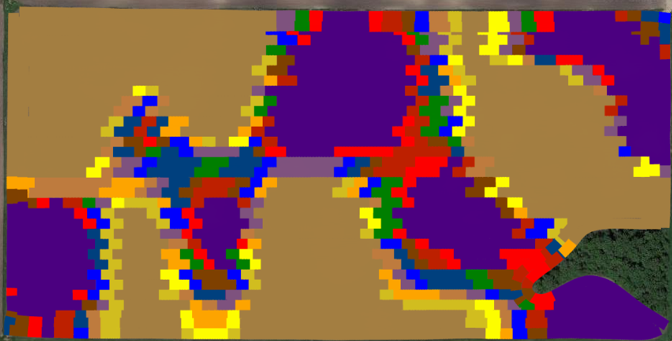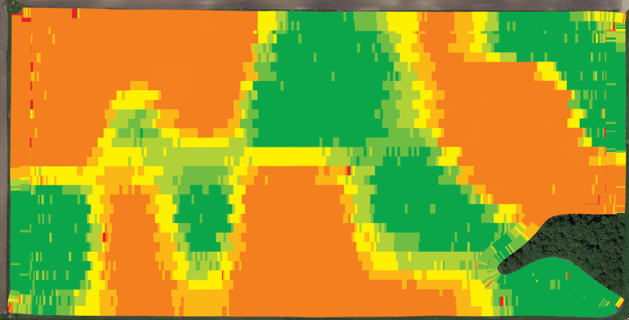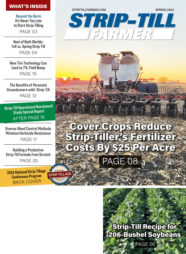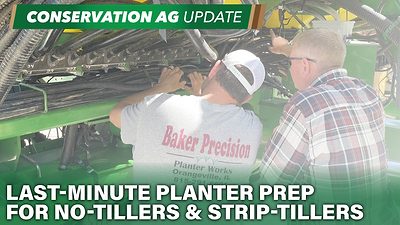With the increased cost of inputs and pressure to reduce nutrient loss, farmers are looking for ways to improve productivity. Precision ag technology will continue to be a key factor in making this equation work for many farmers.
Practices such as variable-rate application (VRA), section control, grid soil sampling, implement steering, and sub-inch GPS accuracy all work towards decreasing inputs and maximizing outputs.
VRA is becoming a widely accepted practice to help save on fertilizer cost by applying precisely what the soil needs in each area to produce the best crop. In combination with a compatible display, the SoilWarrior is VRA-ready.
Some displays require unlocks or activations to enable different functions of a display such as section control, task controller, multi-product and many more. The most common unlock that VRA requires is the task controller function, which handles the documentation and communication between the rate controller and the display. Information is received from the display to the controller and back again via the task controller.
Strip-Till Farmer's Building Healthier Soil and Profits with Strip-Till series is brought to you by Environmental Tillage Systems.
At Environmental Tillage Systems, we believe farmers shouldn’t have to choose between doing what’s right for your soil and what’s right for your business. The SoilWarrior is a complete precision zone tillage system custom built for your farm and delivered to you ready to get in the field. Backed by 24-hour service and support, The SoilWarrior takes the guess work out of strip-till so you can concentrate on defending the land and leading the charge. See soilwarrior.com for more information.
VRA works in combination with your prescription map, tractor guidance and the rate controller. There are a couple settings that contribute to consistent and accurate rate changes when using VRA — offsets and look ahead time.
- When setting up your implement in the display, it is very important to input the correct offsets to ensure smooth transitions from one rate to another. Offsets are the relation of the implement’s position relative to the tractor. For example, hitch point to application point. This measurement tells the display when to shut the product flow off or when the implement will cross over into a new rate zone.
- Look ahead time plays a factor in how quickly and precisely the rate changes. The look ahead time is the amount of time it takes before the implement reacts to the change in rate. Without a look ahead time, the right rate will not respond at the right time. Typically, the value is between 1-2.2 seconds
Fig. 1 is a prescription map loaded into the display from a field that had VRA potash applied with the SoilWarrior.

The majority of this field is in the 165 or 265 pounds-per-acre range with transitional value in between. Typically, prescription maps can be derived from harvest data, soil sampling data, soil maps or a combination of multiple different types of data.
Your local agronomist or crop consultant can help you create prescription maps specific to your farm. Once your maps are created and the prescription is loaded into the display, your machine and rate controller will take it over from there. Fig 2 is that the as-applied map produced during application for that same field.

This as-applied map shows the ability of the SoilWarrior to react to each rate range. This is in part due to the look ahead distance and establishing the correct offsets during setup. During application, the average speed of the machine was 7½ mph, and the field averaged about 208 pounds per-acre across every range.
The potash was in the front bin on a triple bin machine. The other two bins contained sulfur and MAP, each applied at a flat rate. The SoilWarrior is capable of applying nutrients via VRA or straight rate or both at the same time.
Precise nutrient placement is at the foundation of ETS Zone Tillage. The 4R Nutrient Stewardship program aims to educate farmers about the importance of nutrient placement with the 4Rs; Right Place, Right Rate, Right Time and Right Source.
SoilWarrior technology takes the guess work out of nutrient application. With the agriculture technology field advancing at an exponential rate, ETS strives to remain on the leading edge of precision agriculture with the adoption of new technologies.








Post a comment
Report Abusive Comment